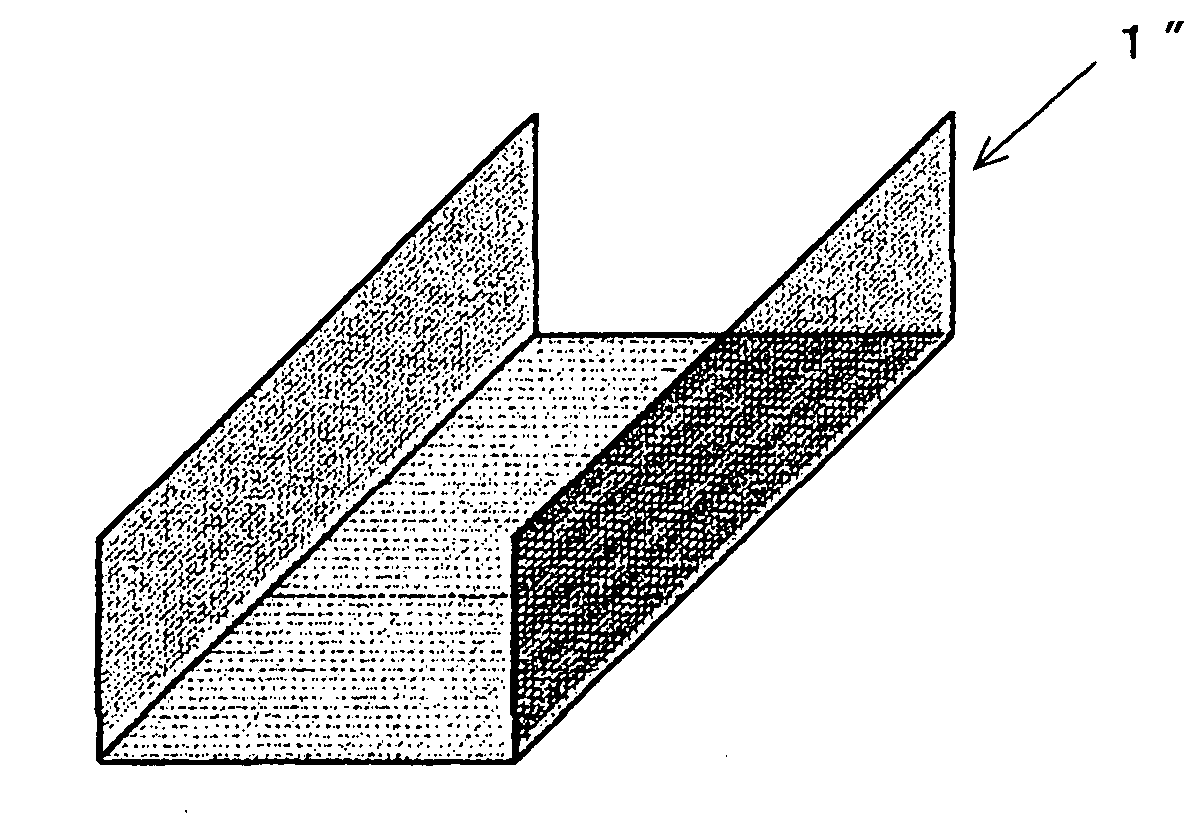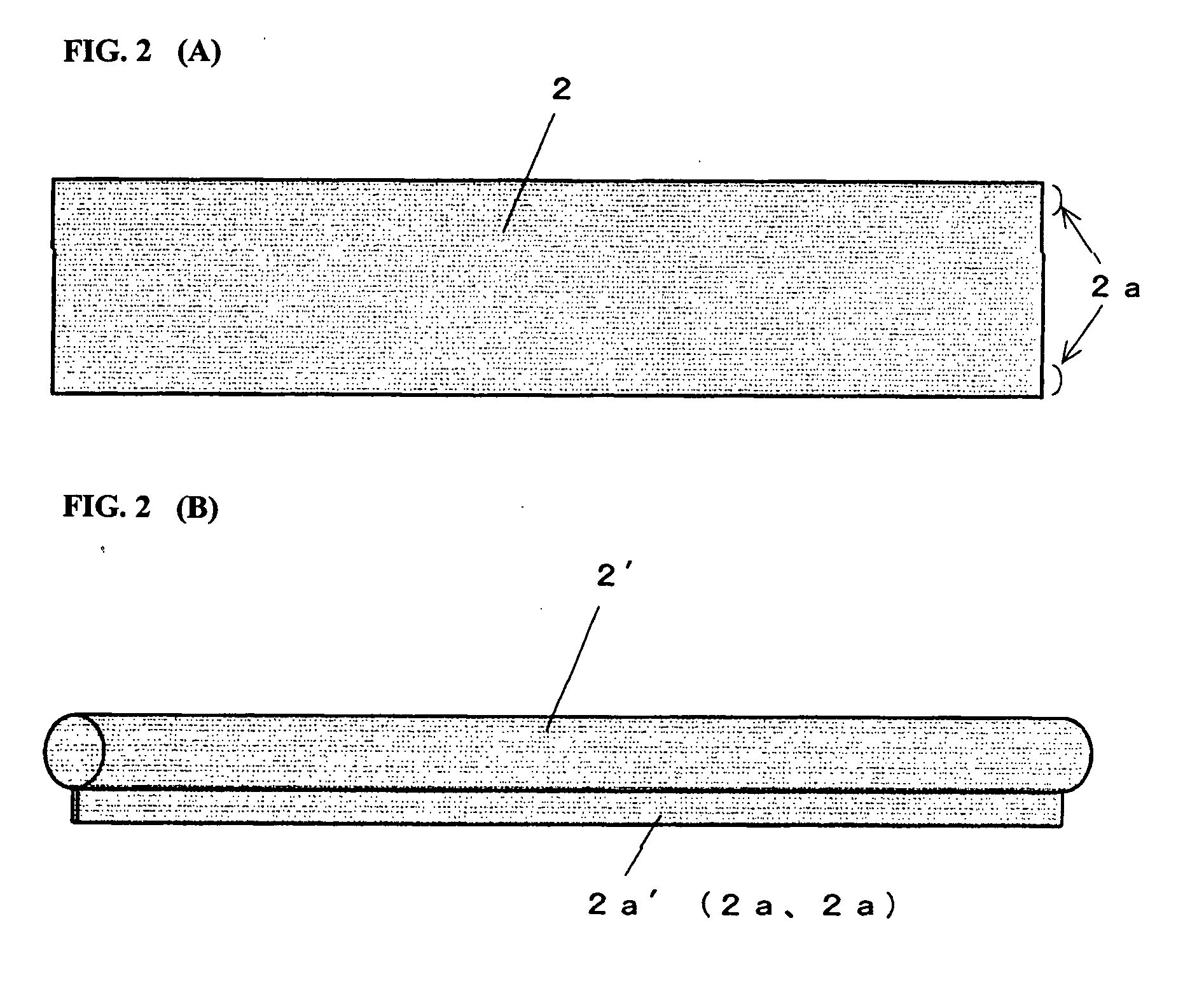Method of processing woven/knitted fabric and the like composed of thermal fusion bonding yarns
a technology of thermal fusion bonding and knitted fabric, which is applied in the field of processing woven/knitted fabric, can solve the problems of defective products made by molding sheets, less strength, and inability to use molded products requiring strength, and achieve the effect of short time and low cos
- Summary
- Abstract
- Description
- Claims
- Application Information
AI Technical Summary
Benefits of technology
Problems solved by technology
Method used
Image
Examples
first embodiment
[0032]FIG. 1A is a view explaining the present invention, wherein reference numeral 1 denotes a woven fabric whose warps and / or wefts are composed of thermal fusion bonding textile yarns such as thermal fusion bonding polyester and the like. The woven fabric 1 is molded to an arbitrary shape as shown in FIGS. 1B and 1C while being applied with heat and then solidified, thereby it is made to molded products 1′ and 1″. Yarns used in the woven fabric 1 need not be entirely composed of thermal fusion bonding textile yarns and may be appropriately mixed with ordinary polyester textile or yarns according to a purpose of a molded product.
second embodiment
[0033]FIG. 2A is a view explaining the present invention, wherein a woven fabric 2, for example, narrow woven fabric and the like composed of thermal fusion bonding textile yarns such as thermal fusion bonding polyester and the like is solidified while being applied with heat and molded to a pipe-like molded product 2′ as shown in FIG. 2B, and a fin portion 2a′ is formed by bonding and solidifying both the end edges of the woven fabric 2.
[0034]FIG. 3A shows a molded frame product 3 having many holes h1 formed to the fin portion 2a′ of the pipe-like molded product 2′ molded of the second embodiment. In contrast, in FIG. 3B, strip-like edge portions 4b, which are molded by the method of the first embodiment, are bonded to and integrated with the periphery of a mesh-like woven fabric 4a of crochet knit and the like, slender holes h2 are formed to the strip-like edge portions 4b, the slender holes h2 are overlapped on the holes h1 of the molded frame product 3, and a cord, a wire or the...
third embodiment
[0036]FIG. 5A shows the present invention that is an H-shaped molded product 6 made by heat-molding three-dimensional woven fabric having an H-shaped cross section and composed of thermal fusion bonding textile yarns such as thermal fusion bonding polyester and the like. Partition boards B installed in veranda portions of a housing complex, for example, can be made using the H-shaped molded product 6 as shown in FIG. 5B.
PUM
| Property | Measurement | Unit |
|---|---|---|
| thickness | aaaaa | aaaaa |
| strength | aaaaa | aaaaa |
| shape | aaaaa | aaaaa |
Abstract
Description
Claims
Application Information
 Login to View More
Login to View More - R&D
- Intellectual Property
- Life Sciences
- Materials
- Tech Scout
- Unparalleled Data Quality
- Higher Quality Content
- 60% Fewer Hallucinations
Browse by: Latest US Patents, China's latest patents, Technical Efficacy Thesaurus, Application Domain, Technology Topic, Popular Technical Reports.
© 2025 PatSnap. All rights reserved.Legal|Privacy policy|Modern Slavery Act Transparency Statement|Sitemap|About US| Contact US: help@patsnap.com



